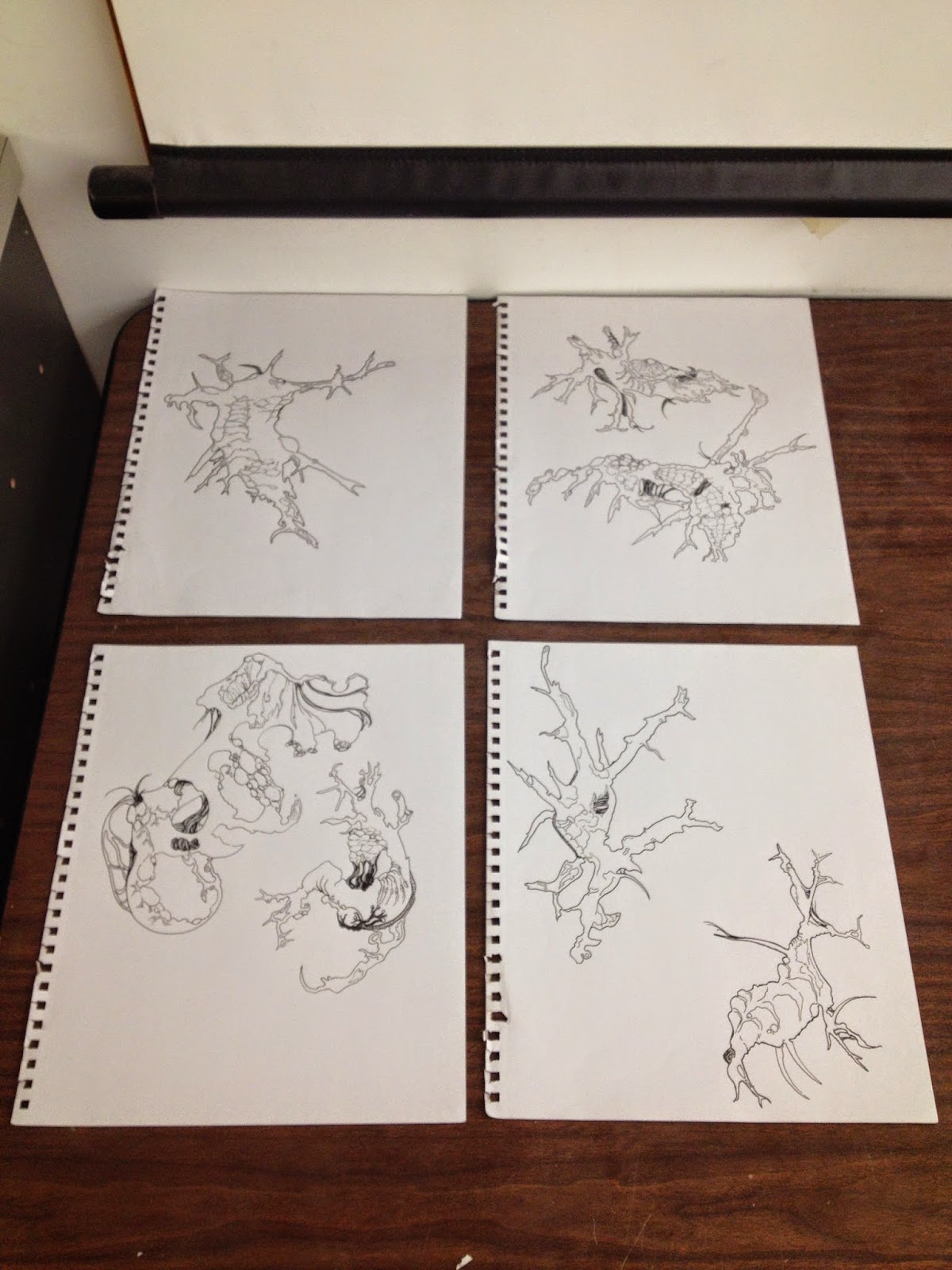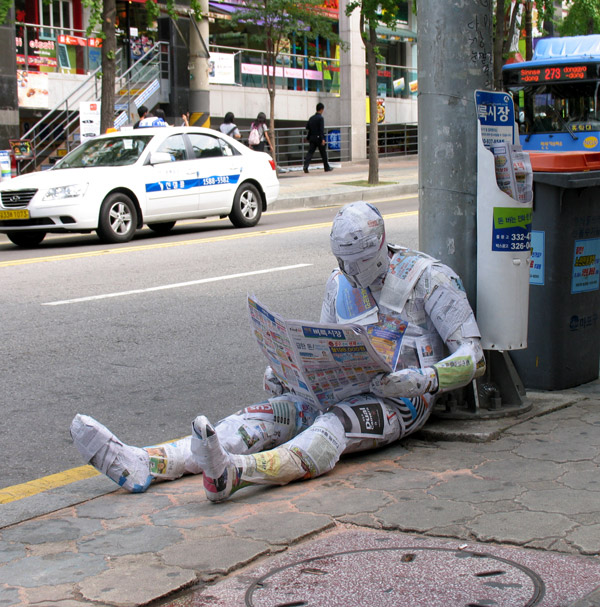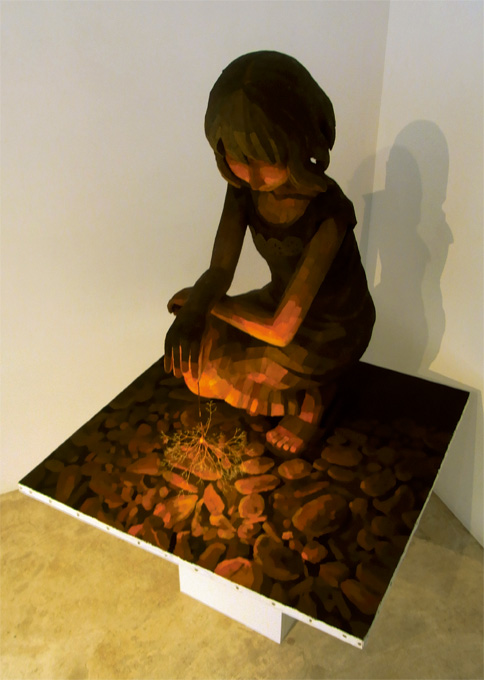Well Hello! Another Wednesday is upon us and with that I bring you something that WOWed me last week - 3D printing goof ups.
So this semester has been a big old pile of MADNESS. Productivity, efficiency, creativity, and successful madness, at least. Last week I received an email that enclosed the MAEA conference workshop schedules and I was SO excited to see my name on there :)
 |
| It's official. I am a workshop presenter. Bow down. |
But that got me thinking.. HOLY CRAP I ONLY HAVE A FEW MONTHS TO PREPARE FOR THAT?! Panic.. subsided, eventually, and I made an appointment to print in the Design Lab on campus. I downloaded a pre-made model set of, of all things, Pokemon! The files had a set of different 'starter' Pokemon from the original 151. Yes, I am a nerd.
 |
| Charmander! |
I also thought Pokemon would be a good choice to print because kids will be familiar with them and it's relevant to their interests. All about relevance. And Charmander is cool. ANYWAY.
I also finally finished my Rocket Whale model that I was building on Tinkercad! Last time I was printing the website crashed and I had to start over again.. talk about frustrating.
 |
| Rocket Whale side view |
 |
| Rocket Whale top view |
As with all new technologies, troubleshooting nearly ALWAYS comes into play. This particular issue was completely human error.. aka me being careless and not paying attention. Bad. I wanted to print my whale in royal blue PLA filament and that would have been fine.. if the spool was attached to the right machine! I attempted to attach the filament spool to the new Makerbot 5th Gen, completely disregarding the fact that it didn't.. exactly.. fit on the machine. It was a spool made for an earlier model and so was larger and too tall for the printer. Uhhh...duh.. and so began the long saga of the Robot Whale print!
 |
| the fruits of my labors.. ick |
Attempt 1: I THOUGHT I had everything set to go! Filament loaded, extruder heated, printer plugged in... yeah, no. I was working on printing multiple models at once so I arranged two different sized whales next to each other. However, I completely forgot to move the models to the print bed. Which basically meant the Makerbot thought my models were floating in space above the print bed. This lead to two separate whale bases (on left) that kind of.. ended up being a pile of squiggles. So. I immediately aborted the print and cleared the print area. We press on and start again!
Attempt 2: MOVED my whales to the print bed. Made sure they were sitting level and nice and pretty on the screen, right? Riiight? Okay, well. Again, human error intervened. I had loaded the larger spool onto the printer and about 3 minutes into the second attempt the spool FELL OFF the printer onto the prints, narrowly missing the extruder and I had to play damage control on the spot! Stupid mistakes lead to bigger problems than necessary when you don't correct them because of stubbornness; lesson LEARNED. I am lucky the printer wasn't damaged - just my pride. On to the next attempt...
Attempt 3: Now, I'm not a superstitious person, but 3 is my lucky number. And I had FINALLY grasped the error of my ways. I gave up the blue PLA and switched to a properly sized filament for the Makerbot, reset the printer, and got to work checking everything out. One important step I could not miss.. turning on rafts and supports. This step would have probably helped the printer communicate more effectively in the first attempt..but probably not. I have learned to ALWAYS either move the print to the bed or rotate it in a way that it lays flat on the bed.. because if not it will be a messy squiggle party. But I digress..
 |
| Rafts and supports ON |
 |
| behold.. the raft |
Rafts are used as a foundation for the model to be built on top of. They are often printed in the opposite direction of the rest of your print, or in a very simple pattern that differs from the final print. This allows the print to be attached to the print bed and also allows for easy detachment from the rest of your model. Think of it like a plate- the plate holds the food and also acts as a base that the food can be removed from. I will be the master of analogies by the end of this post haha
I exported my print file to the printer and then.. finally.. success. The print was estimated to take 2 hours and 40 minutes but in the end it took closer to 3 hours. No filament problems, no other hold-ups.. just straight printing!
With rafts and supports turned on the print would take much longer but would also be much more structurally sound. Supports are little structures that resemble scaffoldings that hold up certain parts of the print internally and hold external pieces on to the model.
 |
| Rocket whales in progress.. |
I double and triple-checked the models throughout the process. The timing was perfect; I could work on my other homework while the print clicked away and took shape. As I watched the supports fall into place I realized that the model was going to be FILLED with material. During modeling I made sure that the models were hollowed out in the middle which optimizes print time and efficiency.

I timed the Charmander prints perfectly with the rocket whales and they were complete in less than 3 hours.. go figure! You can plan everything out and it can all go differently when you're not looking.. This model was pre-made by a designer and the only problem I encountered was with the filament! AGAIN! I admit.. my stubbornness got the best of me on these prints. I once again put a spool that was too large into the printer and thaaaat came back to bite me! The filament was a bit tangled on the spool and I wasn't paying attention so at one point the filament stopped going through the extruder. This created a gap in the rows being printed. Two or three layers were not printed because the filament was not tensioned properly, and luckily the spool didn't fall out again! But I basically had to unravel the filament (since I couldn't untangle it during printing) to reduce tension and resume printing.
 |
| 75% complete! |
 |
| Check out that Charmander! |
By the time the prints were at 75% completion it was also time to leave for the day. I paused the prints and left the files in the lab to print the next day. Luckily, my professor was coming back the next day and finished off the printing process. Then it was my job to clean up the prints and remove them from the print bed. The Charmanders detached easily from their rafts;
whomever designed them did a really good job of printing in the opposite orientation for quick removal. The Rocket Whales, however, were another animal entirely.
 |
| choose your weapon |
I had to remove the whales from the rafts with... a multitude of tools. The first tool I usually use to remove objects from the printer is a paint scraper. After that initial removal I then I had to use pliers, tin snips, needle nose pliers... lots and lots of tools to remove the tiny supports and remnants of the rafts. This took forEVER. I spent nearly an hour scraping and pulling off PLA from the bottom and sides of the whales. In addition to that, the whales were no longer hollow; they were filled with supports. If I had enough time I would probably go back to the model and go through to clear out the supports and keep the hollow quality. One model problem I discovered was that the 'egg' shape I used to hollow out the whales had collided with the outer 'wall' and created a bit of a fault at the front of the whales. Not a major issue, but if I had been more careful with my modeling I could have prevented that design flaw. Again, learning from the mistakes.. that's what it's all about :)
All in all, I was very pleased with the quality of the models.. and now I have a couple of little glow in the dark Rocket Whales to hang out with!
What I learned:
Uuum well, what didn't I learn?! I think 3D Printing is a hugely useful tool in terms of learning by design, failure, correcting mistakes, prototyping.. I had to make many, many changes before I had a successful result with my own print design. Many of the changes I made were to prevent further errors in the process, not in the design. TinkerCad was immensely helpful in troubleshooting the models before printing but at a certain point I admit I became kind of lazy. I should have checked the wall thicknesses before adding a hollowed out hole form. Other than that, the models were structurally sound, solid, they sat 'flat' on the table, and were just plain cute!
It was fun to go all the way from planning, to constructing, to modeling, and then finally to printing and see the final results. I will be creating more objects in TinkerCad to experiment with in the lab and continue to post my findings and reflections. I have found it immensely helpful to write about each experience - and now I will have my writings to fall back on in my presentation as well! The end goal is to demonstrate the entire process through images and I hope to print samples for each attendee of the workshop at the conference... gotta figure out what their 'take-home' print will be.
On that note, I finally have a break for a bit between classes so I am going to RELAX.
Next post will feature a 303 progress report and lots of new ideas.
Time for some lunch.. My life revolves around food.
Ms. Kanak









































